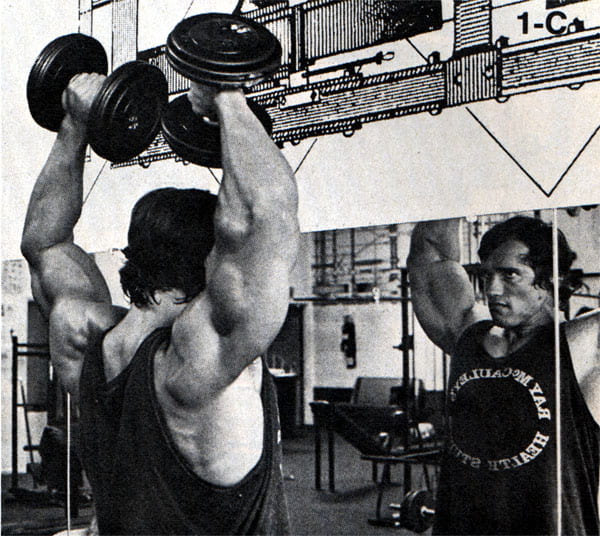There are four main types of exercise, each will benefit your health and wellbeing in different ways. They include aerobic (cardio or endurance), strength, flexibility and balance.
For whatever reason, you are looking to start exercising be sure to incorporate all of these as it will help reduce the risk of injury and will, in turn, improve your ability when performing the others.
In more recent research experts suggest starting your routine with a light warm-up, this gets the blood flowing to your muscles.
After a short warm-up of five to ten minutes, your muscles are ready for a workout.
After your routine is a good time to do some flexibility exercises, such as stretching, yoga, pilates or even Tai Chi as a post-workout cool down.

Aerobic exercise
Aerobic exercise or cardiovascular exercise (cardio) is any type of continuous exercise that work out your heart, lungs and muscles.
This can include any walking, jogging, running, cycling, swimming, rowing or the equivalent on exercise machines.
Also, any sports such as tennis, badminton, hockey, rugby and football are all great ways to get your aerobic exercise. Most fitness, such as “HIIT” and PE with Joe, which do not rely on resistance or weight will be regarded as part of your aerobic exercise and will also help improve your strength and flexibility.
When doing aerobic exercise, you should expect your heart rate to speed up as well as your breathing.
It gives your heart and lungs a workout and increases your endurance, in other words, it increases the amount of pressure you can put your body through allowing you to run further, harder and longer.
Aerobic exercise is important to relax blood vessel walls, lower blood pressure, burn body fat, lower blood sugar levels, reduce inflammation, boost mood and raise ‘good’ cholesterol.
Long term benefits include reduced risk of heart disease, stroke, type 2 diabetes, breast cancer, colon cancer and depression.
A person should aim to do at least 150 minutes of moderate-intensity exercise or 75 minutes of vigorous-intensity exercise a week.
Strength exercise
Strengthening exercises focus on building and maintaining strength and muscle mass.
Strengthening exercises are important in early life to develop muscle strength and healthy bones, in later life exercises help delay the natural decline in muscle mass and bone strength.
Having strong muscles and a good posture can help to prevent problems such as lower back pain.
Strengthening exercises can involve the use of body weight, resistance machines, resistance bands or free weights.
There are two different types of exercises when it comes to strengthening exercises, compound and isolation exercises.
Compound exercises
Compound exercises require the use of multiple muscle groups or joints. These exercises are efficient, they work out multiple muscles in a short amount of time and should burn more calories as they use more energy.
People do compound exercises because they instate a larger hormone response of testosterone which helps repair structural damage of muscles and help maintain gained muscle.
Compound exercises include bench press, push-ups, deadlifts, pull-ups, chin-ups, the Arnold press and squats.
Isolation exercises
Isolation exercises target a specific muscle group and only use one joint. People do isolation exercises to work on a particular muscle that they want to develop.
You can expect significant gains as there is more attention paid to one muscle group.
Isolation exercises can be a great addition to a routine which includes compound exercises.
They would be used to exhaust a particular muscle ensuring more concentrated and targeted gains.
For example, if you were training legs, after completing a series of deadlifts you could add in hamstring curls. If you were training chest, after finishing a series of press-ups you could add in triceps extensions.

Flexibility exercises
Flexibility exercises help improve how well your joints move, these involve slow movements to stretch your muscles.
Flexibility helps improve mobility, posture, muscle coordination, reduces the risk of injury and muscle soreness.
Failure to regularly do flexibility exercises can lead to muscles shortening.
Low flexibility feels like stiff muscles and can restrict your day-to-day life.
Activities such as yoga and pilates help with flexibility as well as strength and balance.
Whilst taking part it is important to concentrate on your breathing.
Routines in yoga and pilates take your body through a massive array of different positions.
If you don’t have time for a full routine some gentle stretches can be used instead.
Hold your stretches between 10 and 60 seconds and repeat two to three times.
When stretching your muscles, it shouldn’t hurt, if it does this may mean that you have an injury.
Balancing exercises
Balance is a necessary part of everyday movement, how well you can balance is attributed to a combination of your eyesight, the nerve receptors in your inner ear and receptors in your skin, joints, ligaments, tendons and muscles working together to create a map of your body’s position.
Improving your balance helps you become steadier on your feet and also helps prevent falls and injury.
This is especially important as we get older.
These exercises will benefit athletes more than anyone but are also useful for rehabilitation of something like an ankle injury as well as reducing the risk of tendon problems in athletes.
Tai Chi is a moving meditation activity which will help improve your balance and has been shown to improve cardiovascular fitness, strength, and flexibility.
Other activities such as pilates and yoga will help improve your balance as well as your flexibility and strength.
A study has shown that to help those with balance problems Tai Chi can be outperformed by balance training activities.
The idea behind balance training is to keep your body stabilised under increasingly difficult circumstances by for example standing on one leg, closing your eyes, catching balls or an addition of a wobble board.
